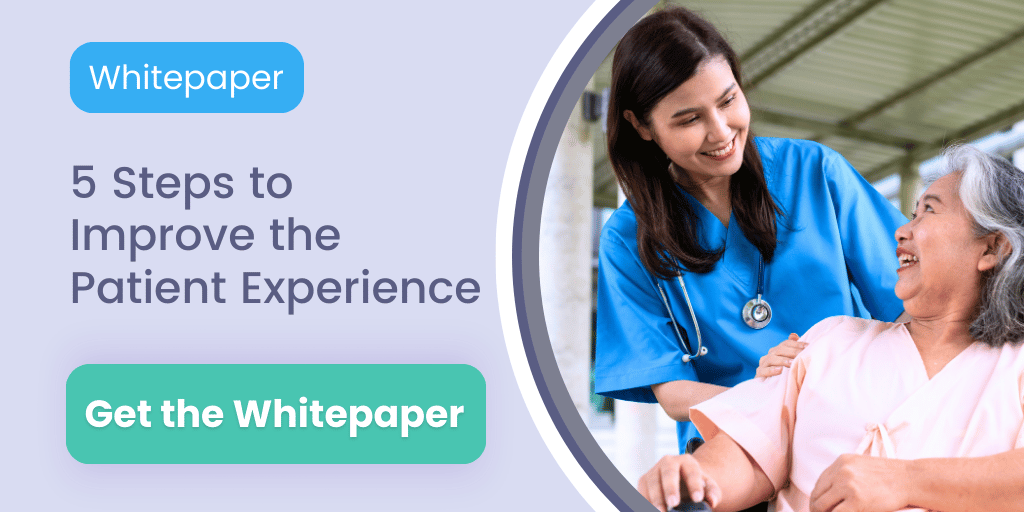2 min read
Get Incident Reporting Software in Healthcare for Better Outcomes and Increased Patient Satisfaction
Performance Health Partners
September 26, 2022

As patient safety becomes increasingly challenged by growing threats, it’s essential for healthcare organizations to put in place measures to proactively prevent risks and bolster safety. Incident reporting software in healthcare has become an essential tool for streamlining and strengthening safety efforts, but it is also beneficial for improving outcomes and employing patient satisfaction strategies to enrich the overall patient experience.
In the wake of COVID-19, new threats are increasing in frequency and severity. Staffing shortages, COVID-19 effects on healthcare workers’ mental health, and international supply chain disruptions are just a few of the concerns increasing patient safety risk.
But organizations utilizing incident reporting technology can stay one step ahead of patient safety threats by utilizing data to quickly identify risk and take action to prevent harm. Moreover, these healthcare organizations can leverage data to improve patient outcomes and enhance patient satisfaction.
The Growing Importance of Patient Engagement
While many patient safety interventions have used traditional models of effecting change, the patient’s role in healthcare safety has not been unnoticed. Patient involvement in their own care has ever more been recognized as a key component in the advancement of patient safety.
In 2007, the Joint Commission mandated that healthcare organizations "encourage patients' active involvement in their own care as a patient safety strategy," as studies have found that active engagement of patients can improve adherence to safety practices.
In fact, it’s been studied that patients often report errors that were not detected through traditional mechanisms such as chart review. Other research (in the intensive care unit and inpatient pediatric wards, specifically) shows that interventions that explicitly include patient and family engagement can improve safety culture and may reduce adverse event rates.
That’s why the best incident reporting software in healthcare includes and encourages patient-generated reports. By giving patients a voice, they become empowered to participate in their own care and thus contribute to improving the culture of safety in healthcare.
The Link Between Incident Reporting Software in Healthcare and Patient Satisfaction
Incident reporting systems not only facilitate direct patient involvement, but also foster clearer and more transparent communication between patients and their care teams.
Incident reporting software also boosts patient retention, as it ensures that patients continue to have a positive and engaging experience throughout their entire care journey, during visits with providers across different departments, service lines, or locations.
For example, it is imperative that a provider be able to see that the patient had a pervious incident where she experienced an abnormal reaction to a medication. Because effective incident reporting platforms capture, organize, communicate, and report incidents to every member in the organization, this medication reaction is clearly visible, and thus can more effectively be avoided.
In the case that a patient is affected by a safety event such as a fall, medication error, or healthcare-acquired infection, an incident reporting system can track the follow-up management process, ensuring that appropriate corrective actions are taken, and protocols are followed. After all, ensuring successful resolution is essential for preserving a positive patient experience.
Knowing about prior events linked to specific patients is imperative to reducing future risk. Furthermore, having a centralized database that houses and displays patient event data is a powerful tool that can be leveraged to enhance patient satisfaction.
Using Data to Improve Outcomes
While many harmful events are preventable, healthcare is nevertheless a high-risk industry, and sometimes harm is inevitable.
Incident reporting software in healthcare integrates and organizes patient and employee safety information in a centralized location, eliminating the departmental siloed approach to assessing quality indicators. With features like automated email notifications, care teams are instantly and continuously updated about safety events and status changes.
One of the most powerful ways incident reporting technology improves outcomes is by identifying event trends and areas where quality and efficiency could be improved, and empowering organizations to leverage this data to prevent harm.
When providers have a platform through which to easily capture, analyze, and share data – either exported to patient safety organizations or shared internally with staff and leadership – they can proactively act on potentially harmful situations, mitigate risk, and ultimately improve care outcomes.
Interested in learning more about incident reporting software in healthcare and how it can help your organization meet its goals? Download our "Streamlining the Incident Management Process" whitepaper or schedule a call with our team.



